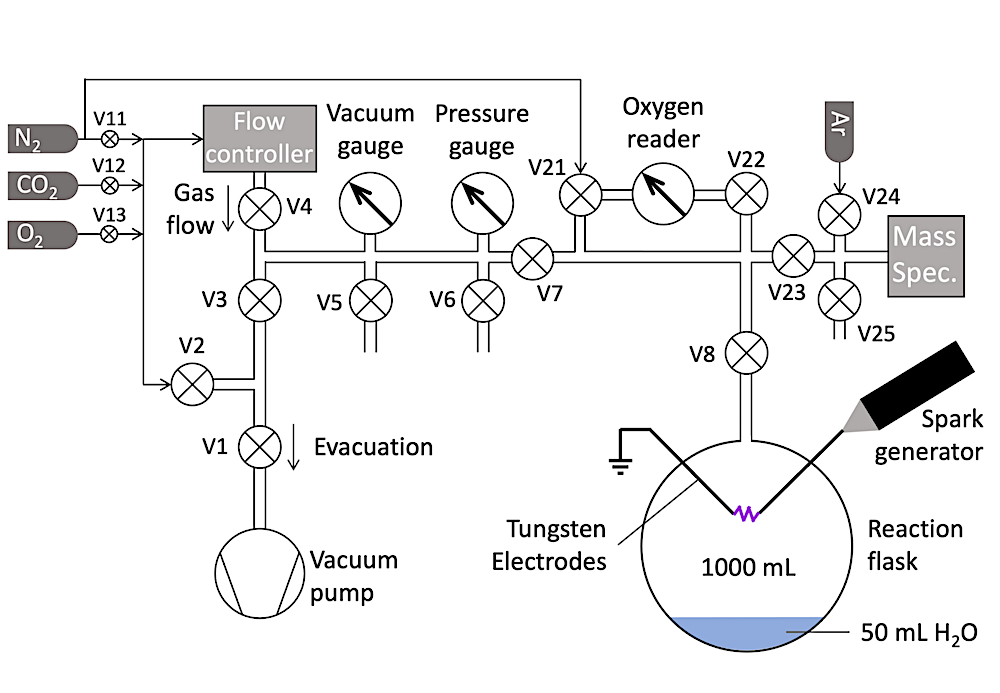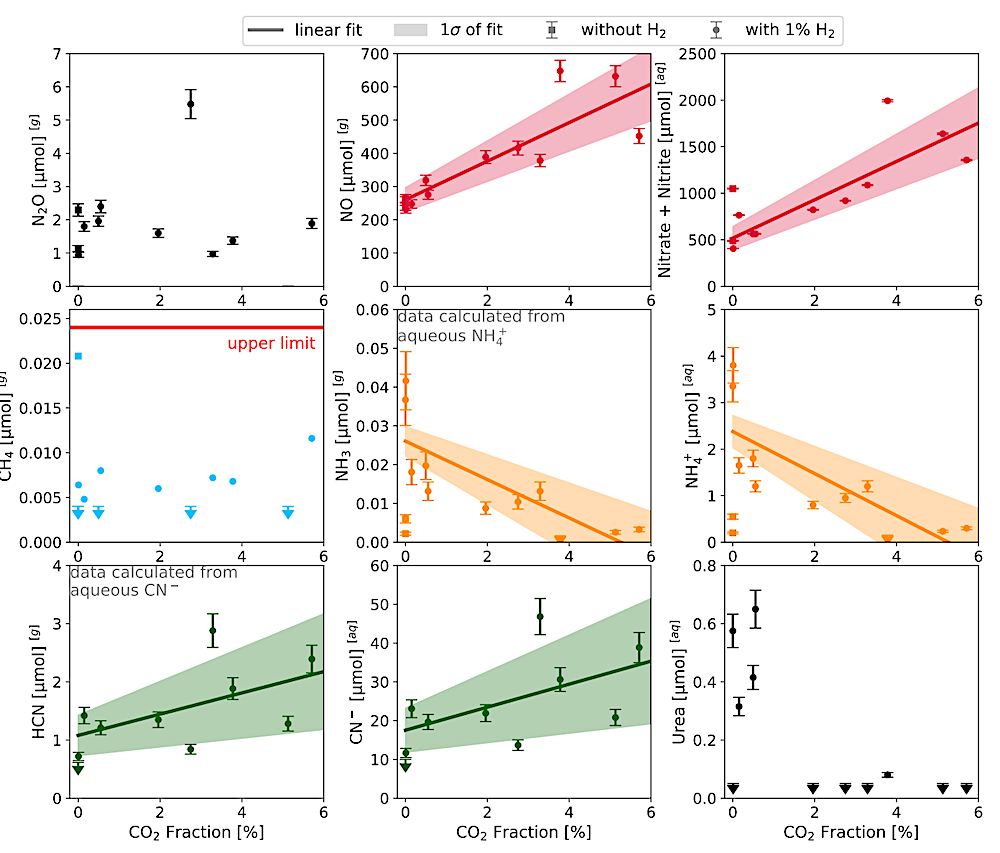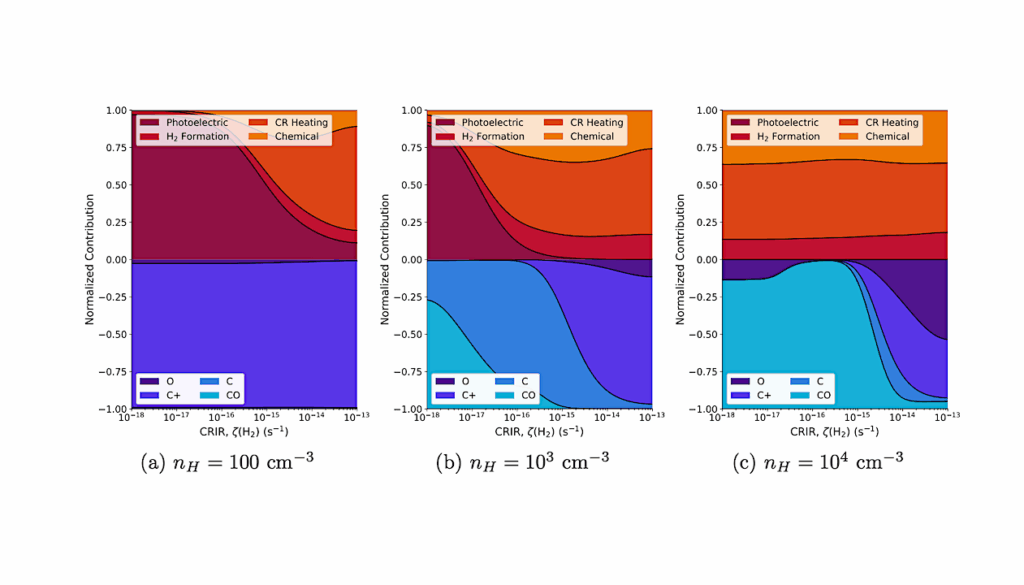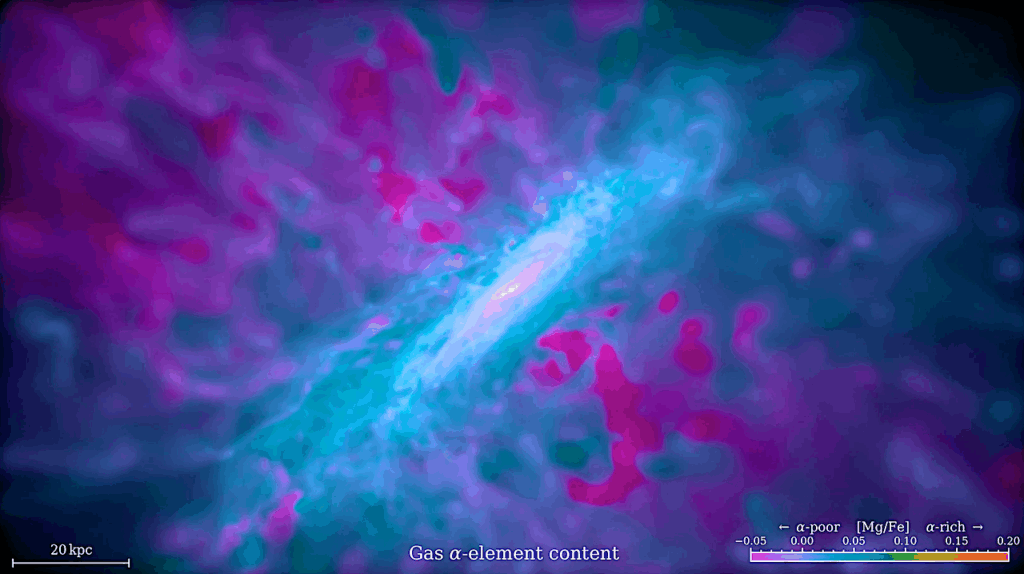The Effect Of Lightning On The Atmospheric Chemistry Of Exoplanets And Potential Biosignatures

Lightning has been suggested to play a role in triggering the occurrence of bio-ready chemical species. Future missions (PLATO, ARIEL, HWO, LIFE) and ground-based ELTs will investigate the atmospheres of potentially habitable exoplanets.
We aim to study the effect of lightning on the atmospheric chemistry, how it affects false-positive and false-negative biosignatures, and if its effect would be observable on an exo-Earth and on TRAPPIST-1 planets. We use a combination of laboratory experiments, photochemical and radiative transfer modelling.
With spark discharge experiments in N2-CO2-H2 gas mixtures, representing a range of possible rocky-planet atmospheres, we investigate the production of potential lightning signatures (CO, NO), possible biosignature gases (N2O, NH3, CH4), and important prebiotic precursors (HCN, Urea).
Photochemical simulations are conducted for oxygen-rich and anoxic atmospheres for rocky planets in the habitable zones of the Sun and TRAPPIST-1 for a range of lightning flash rates. Synthetic spectra are calculated using SMART to study the atmosphere’s reflectance, emission, and transmission spectra.
Lightning enhances the spectral features of NO, NO2, and, in some cases, CO; CH4 and C2H6 may be enhanced indirectly. Lightning at a flash rate slightly higher than on modern Earth can mask the ozone features of an oxygen-rich, biotic atmosphere, making it harder to detect the biosphere.

Schematic of the experimental setup of the discharge experiment. First published in Barth et al. (2023) by Springer Nature. — astro-ph.EP
Lightning flash rates at least ten times higher than on modern Earth can mask the presence of ozone in the anoxic, abiotic atmosphere of a planet orbiting a late M dwarf, reducing the potential for a false-positive life-detection. The threshold lightning rates to eliminate oxygen and ozone false positive biosignatures on planets orbiting ultra-cool dwarfs is up to ten times higher than the modern flash rate, suggesting that lightning cannot always prevent these false-positive scenarios.

Final abundances of gaseous ([g] ; nitrous oxide (N2O), methane (CH4 ), hydrogen cyanide (HCN), nitric oxide (NO), and ammonia (NH3 )) and aqueous ([aq] ) products (CN– , nitrite + nitrate, NH + 4, and urea) in overnight experiments. Data points represent individual experiments with varying CO2 fractions. Experiments without any H2 and CO2 are indicated by squares and not included in fits. Lines are best linear fits for dependency between CO2 concentration and the final abundance of products. Measurements below the detection limit (arrows) are included as (Detection Limit / √ 2) in the fitting process. Shaded areas give 1σ-range. No fit is shown for methane since all measured values are within 1σ of 0 (red line), for nitrous oxide since there is no trend visible in the data, and for urea as most measurements for CO2 > 1% below the detection limit. Abundances of HCN and NH3 are calculated from measured aqueous abundances of CN– and NH + 4 , respectively. — astro-ph.EP
Patrick Barth, Eva E. Stüeken, Christiane Helling, Edward W. Schwieterman, Jon Telling
Comments: Accepted for publication in Astronomy & Astrophysics. 30 pages, 22 figures (including appendix)
Subjects: Earth and Planetary Astrophysics (astro-ph.EP)
Cite as: arXiv:2402.13682 [astro-ph.EP] (or arXiv:2402.13682v1 [astro-ph.EP] for this version)
Submission history
From: Patrick Barth
[v1] Wed, 21 Feb 2024 10:34:53 UTC (1,360 KB)
https://arxiv.org/abs/2402.13682
Astrobiology








